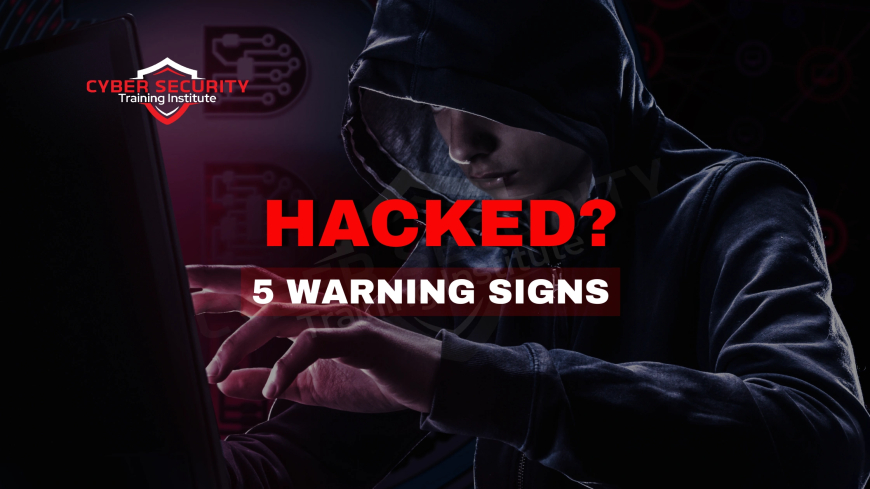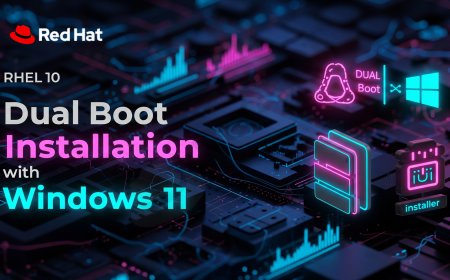Think You're Safe? 5 Signs You've Already Been Hacked
In today’s digital world, we rely on our devices for everything—work, socializing, banking, and more. But what happens when the very tools we trust turn against us? Hackers are becoming sneakier, and their methods are more sophisticated than ever. You might think your online life is secure, but sometimes the signs of a hack are subtle, hiding in plain sight. This blog post will walk you through five telltale signs that your device or accounts may have already been compromised. By recognizing these red flags early, you can take action to protect yourself and your data.

Table of Contents
- Unexpected Account Activity
- Unusual Device Behavior
- Unfamiliar Programs or Files
- Suspicious Network Activity
- Messages You Didn’t Send
- Conclusion
- Frequently Asked Questions
Unexpected Account Activity
One of the first signs you’ve been hacked is noticing strange activity in your online accounts. Hackers often gain access to email, social media, or banking accounts without immediately alerting you. Here are some red flags to watch for:
- Login alerts from unfamiliar locations: If you receive notifications about logins from devices or locations you don’t recognize, it’s a strong indicator someone else has your credentials.
- Password changes you didn’t make: If you’re locked out of an account because the password was changed without your knowledge, act immediately.
- Strange account settings: Check for unfamiliar email forwarding rules, new authorized apps, or changed security questions.
What to do: If you spot any of these, change your password immediately, enable two-factor authentication (2FA), and contact the platform’s support team. Regularly review your account activity logs for anything suspicious.
| Sign | What It Looks Like | Action to Take |
|---|---|---|
| Unfamiliar login alerts | Email or text about a login from another country | Change password, enable 2FA |
| Changed password | Can’t log in; password no longer works | Use account recovery options |
Unusual Device Behavior
Your computer or phone might start acting strangely if it’s been hacked. Hackers can install malicious software (malware) that disrupts normal operations. Look out for these symptoms:
- Slow performance: If your device suddenly becomes sluggish, it could be running hidden processes initiated by malware.
- Unexpected crashes: Frequent crashes or freezes might indicate malicious activity interfering with your system.
- High battery drain: If your phone’s battery dies faster than usual, it could be running unauthorized apps in the background.
What to do: Run a full scan with reputable antivirus software. If you suspect a hack, disconnect from the internet and consult a professional to remove malware. Keep your operating system and apps updated to patch security vulnerabilities.
Unfamiliar Programs or Files
Finding unknown programs or files on your device is a major warning sign. Hackers often install software to spy on you, steal data, or control your device. Watch for:
- Unknown apps: Check your installed programs or apps for anything you didn’t download.
- Strange files: Look for unfamiliar files, especially in system folders or with odd extensions like .exe or .bat.
- Pop-ups or toolbars: Unwanted browser toolbars or frequent pop-up ads can indicate adware or spyware.
What to do: Uninstall unrecognized programs through your device’s control panel or settings. Use an anti-malware tool to scan for and remove suspicious files. Be cautious about downloading software from unverified sources.
Suspicious Network Activity
Hackers often use your internet connection for malicious purposes, like sending spam or mining cryptocurrency. Signs of compromised network activity include:
- Slow internet speeds: If your connection is unusually slow, it could be due to unauthorized data transfers.
- High data usage: Check your router or data plan for unexplained spikes in usage.
- Unknown devices on your network: If unfamiliar devices appear on your Wi-Fi network, someone may have gained access.
What to do: Change your Wi-Fi password and ensure your router uses strong encryption (like WPA3). Monitor connected devices through your router’s admin panel. If you suspect a breach, reset your router to factory settings.
Messages You Didn’t Send
If friends or colleagues report receiving strange messages from your accounts, it’s a clear sign of a hack. Hackers may use your email or social media to send phishing links or scams. Look for:
- Messages in your sent folder: Check your email or messaging apps for sent items you don’t recognize.
- Complaints from contacts: If people say they received odd messages from you, investigate immediately.
- Unauthorized posts: Look for posts or comments on your social media that you didn’t create.
What to do: Secure your account by changing passwords and enabling 2FA. Warn your contacts not to click on suspicious links. Scan your device for malware that might be sending messages.
Conclusion
Being hacked is a frightening experience, but recognizing the signs early can make all the difference. From unexpected account activity to strange device behavior, unfamiliar files, network issues, or messages you didn’t send, these red flags are your cue to act fast. By staying vigilant, keeping your software updated, and using strong security practices like 2FA, you can protect yourself from further harm. If you suspect a hack, don’t panic—follow the steps outlined for each sign, and seek professional help if needed. Cybersecurity is an ongoing effort, so make it a habit to monitor your digital life regularly.
Frequently Asked Questions
What does it mean to be hacked?
Being hacked means someone has gained unauthorized access to your device, accounts, or data, often to steal information or cause harm.
How do hackers get into my accounts?
Hackers use methods like phishing, weak passwords, or exploiting software vulnerabilities to gain access.
Can I tell if my phone has been hacked?
Yes, signs include slow performance, high battery drain, or unfamiliar apps appearing on your phone.
What is two-factor authentication (2FA)?
2FA adds an extra layer of security by requiring a second form of verification, like a code sent to your phone, in addition to your password.
Why is my computer running slowly?
A slow computer could be due to malware running in the background, consuming resources.
How do I check for unfamiliar files?
Look in your device’s file explorer or settings for files or programs you don’t recognize, especially in system folders.
What is malware?
Malware is malicious software designed to harm your device, steal data, or spy on your activities.
Can hackers use my Wi-Fi?
Yes, if your Wi-Fi password is weak or your router is unsecured, hackers can access your network.
How do I secure my Wi-Fi network?
Use a strong password, enable WPA3 encryption, and regularly check for unknown devices on your network.
What should I do if my email is hacked?
Change your password, enable 2FA, and scan your device for malware. Notify your contacts about suspicious emails.
Why am I getting pop-up ads?
Pop-ups can be caused by adware, a type of malware. Run an anti-malware scan to remove it.
Can antivirus software prevent hacks?
Antivirus software can detect and remove many threats, but it’s not foolproof. Combine it with safe browsing habits.
What is phishing?
Phishing is when hackers trick you into giving them your information through fake emails, texts, or websites.
How do I know if my social media is hacked?
Look for posts, messages, or friend requests you didn’t send, or check for unfamiliar login activity.
Can a hacked device infect others?
Yes, malware can spread to other devices on the same network or through shared files.
What is a keylogger?
A keylogger is malware that records your keystrokes to steal passwords or other sensitive information.
Should I pay a hacker to unlock my data?
No, paying hackers (e.g., in ransomware attacks) doesn’t guarantee you’ll regain access and may encourage further attacks.
How often should I change my passwords?
Change passwords every 6–12 months or immediately if you suspect a breach.
Can I recover a hacked account?
Most platforms have account recovery options, like answering security questions or verifying your identity.
How do I stay safe online?
Use strong passwords, enable 2FA, keep software updated, and avoid clicking suspicious links.
What's Your Reaction?
 Like
0
Like
0
 Dislike
0
Dislike
0
 Love
0
Love
0
 Funny
0
Funny
0
 Angry
0
Angry
0
 Sad
0
Sad
0
 Wow
0
Wow
0















